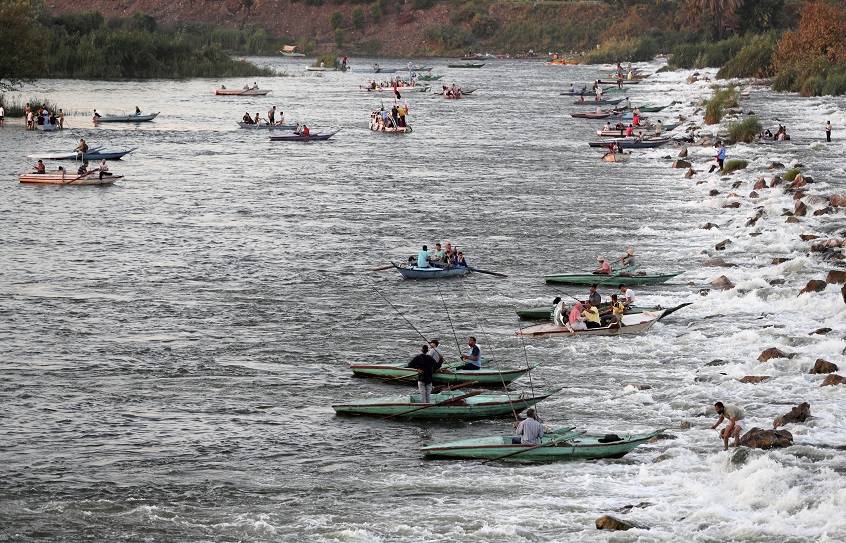Taal Kinaare is as much a place to earn an income in a tourist locale, as it is for other nefarious stuff.
Taal Kinaare. On the bank of the lake. A phrase so layered, it takes a while to fully comprehend.
I went for a ride round the lake with Vikram. He is still in school but seems to know quite a bit about the nuances of Taal Kinaare. Earlier, in an informal conversation, he had made me a bit wiser about this space. To put it clearly, Taal Kinaare has safe/good spaces and unsafe/bad spaces.
It made me really curious. How could such a young boy see so much in and around the beatific surrounding of the lake? The curving, winding tree-lined path, the quiet and peaceful ambience of large ambling stretches…They had given me pleasure and peace.
Over time you learn to see and understand the layers.
As we drove down and took the first two sharp turns, Vikram kept saying, “This is safe.” Then we reached a curve, also the crowded part of this lakeside path. A haunt for tourists and all the “sell stuff” that goes with it. Vikram said, “This is unsafe.” I took the car slowly to the side and parked.
“What do you mean?” I asked him. “Well,” he replied, “those steps behind us…that lead down to the water…there is a kind of room there. You always see beer bottles, glasses, cigarette stubs littered around there. That’s the adda…for the locals.”
In this case, the locals Vikram referred to, are not just anybody who live around here. He specifically meant those who conduct business around the lake…and because of it. A boatman, a horse owner, a tea stall owner or assistant, a shopkeeper, a tout for any or all of them.
I stepped out. My action immediately drew attention. Smart and not-so-smart boys and men began staring and murmuring. I leaned over the fence to peer at the point Vikram had mentioned. From this distance, it gave me no clues. Those around me did. A quick scan threw up at least a few faces with the typical marijuana glassy look.
As I walked back to the car, my mind flashed back. It was a conversation with a young woman, Urvashi. Her home is up in the village and she walks down to go to work every day. The steep path reaches down to the edge of the end of this lakeside path.
Turn right, you are at the boat club point. Turn left, you move towards town. I recall what Urvashi said to me. “I never go to that side (meaning right). It’s terrible. As you get closer, you can smell ganja (marijuana) around you. I don’t like it. Horrible.”
This Taal Kinaare is then as much a place to earn an income in a tourist locale, as it is for other nefarious stuff.
Off and on, I have enquired about this or the other young boy, who seemed to have the potential for a promising future. Often, I have received the simple reply, “Oh, these days he is Taal Kinaare.” Not a word more or less.
It is for me to understand that the boy has gone to waste. A large number of those who work around the lakeside carry this stigma. It does not apply so much to those who have their fixed shops or restaurants. It is more about the floating population.
Today, they could be touting for an adventure zipline mad ride a couple of kilometres away. Tomorrow, they could be rowing a boat for someone here. In between clients, they loiter around. Gossip. Watch “stuff” on mobile phones. Squander away the day, earn their daily bit. Spend on themselves, give a little at home. Tomorrow, it is all the same at Taal Kinaare.
I have yet to hear of a success story about a boy who worked hard Taal Kinaare and made a life for himself. Like owning a boat or setting up a shop or tea stall. I may not be in the groove of it but I believe, if there were such stories, they would be quoted.
So, what happens from the today to the tomorrow in the lives of these people Taal Kinaare? I called two boys home. I had lost contact and wondered what they were doing. I was told they are Taal Kinaare. Ah well, let’s see, I thought to myself.
Mohan is kind of bite-sized with huge expressive eyes. I immediately noticed his very up-to-date haircut with golden L’Oreal streaks. A huge tattoo on his right upper arm, easily visible because of his magia sleeve T-shirt.
Then there was Rakesh. His eyes still twinkled as I remembered but he seemed to have gotten all serious and mature. His carefully manicured stylish beard style showed he was paying a lot of attention to his appearance.
I offered to teach them both English as a value addition to the work they were doing. With the catch that they should take up distance education with the Open University. It was a hopeless conversation.
Mohan aspires to be a trainer (guru) in a gym, but knows it will take years to get there. He manages to go to the gym every day early morning. After that, it is Taal Kinaare. No time to come and learn English.
Rakesh did make an effort to peer into the university brochure. That’s about it. No promises and like Mohan, “no time” to do anything else. Leave alone come and learn English.
Alas, like others, their future and fate seem knotted Taal Kinaare.
Neelima Mathur is an India-based Executive Producer, Researcher, Writer, Mentor and Trainer for documentary and NGO films. She is also Festival Director of the Lakeside Doc Festival.

